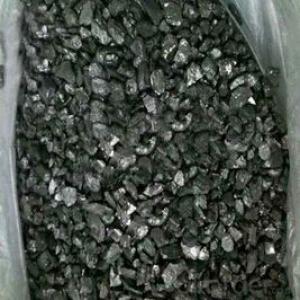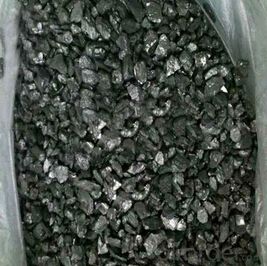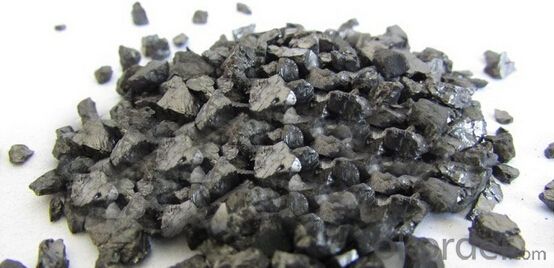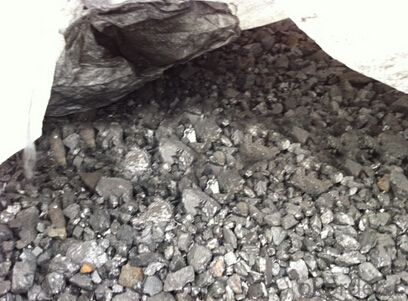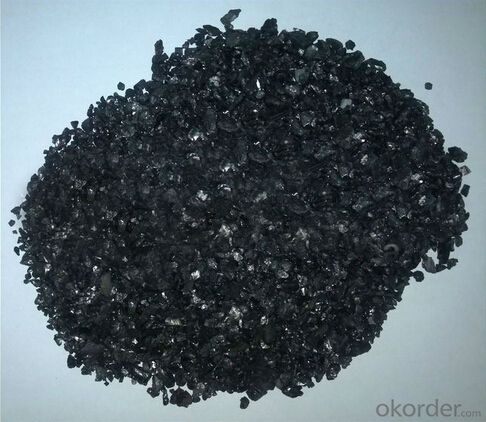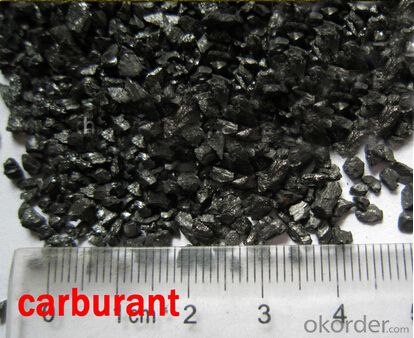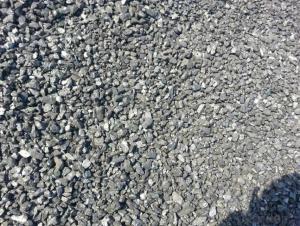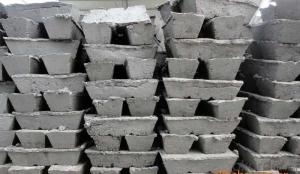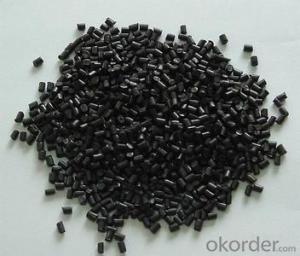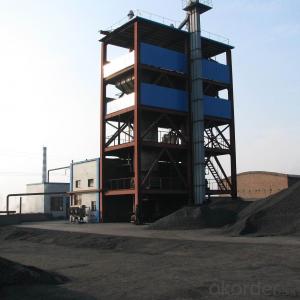Recarburizer updated material for iron melting foundry
- Loading Port:
- Dalian
- Payment Terms:
- TT OR LC
- Min Order Qty:
- 10 m.t
- Supply Capability:
- 500000 m.t/month
OKorder Service Pledge
OKorder Financial Service
You Might Also Like
Specifications:
The chemical composition is pure: high carbon, low sulfur, tiny nitrogen, slightly less harmful impurity.
The carburant has excellent features of high carbon, low sulfur, low nitrogen and little impurity. This product is used in casting, can significantly increase the amount of scrap steel, reduce the pig iron dosage or do not use pig iron. At present most recarburizer are suitable for electric furnace smelting, also have a few special recarburizer with fast absorption rate is used in cupola furnace.
Data Sheet:
Product Num. | Fix carbon (mix) | Sulphur (max) | Ash (max) | Volatile Matter(max) | Moisture (max) | Grain size
| Nitrogen (max) |
GH-CA-01 | 99.00% | 0.03% | 0.50% | 0.50% | 0.50% | 0.15-5mm | 300ppm |
GH-CA-02 | 98.50% | 0.06% | 0.80% | 0.70% | 0.50% | 0.15-5mm | 300ppm |
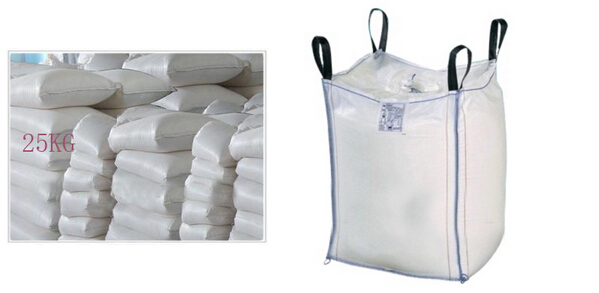
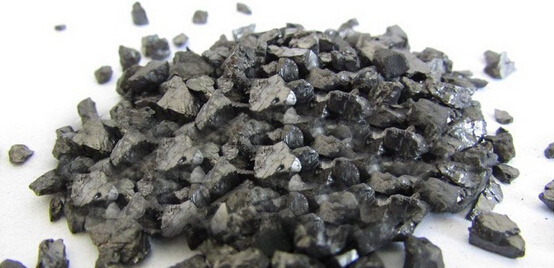
- Q: How does carbon affect the taste of food and beverages?
- The taste of food and beverages can be significantly altered by carbon, which can come in the form of activated charcoal or carbonation. Activated charcoal is known for its ability to absorb impurities and toxins, making it a popular ingredient in various food and drink products. When added to food and beverages, activated charcoal can eliminate unpleasant smells and tastes, resulting in a cleaner and more enjoyable flavor. Carbonation, on the other hand, is widely used in beverages to create a fizzy sensation and enhance the overall sensory experience. By dissolving carbon dioxide gas in liquids under pressure, bubbles are formed when the pressure is released, giving the drink a refreshing and effervescent quality. This carbonation effect can impart a tangy or slightly acidic taste to the beverage, which is often considered pleasant and invigorating. Furthermore, carbonation can also impact the taste of food. For instance, the carbonation found in beer or sparkling wine can help balance the richness of certain dishes, adding a refreshing element and providing a cleanse for the palate. Carbonation can also be incorporated into certain foods, such as bread or pastry dough, to aid in rising and create a lighter texture. It is worth noting that the impact of carbon on the taste of food and beverages can vary depending on the specific application and concentration used. Additionally, the preference for carbonated or charcoal-free options is subjective, as some individuals may prefer non-carbonated alternatives. Ultimately, the use of carbon in culinary applications offers a multitude of possibilities for enhancing taste and providing unique sensory experiences.
- Q: What are the effects of ocean acidification on marine life?
- The detrimental effects of ocean acidification on marine life are substantial. The primary reason for this phenomenon is the rise in carbon dioxide (CO2) emissions, which the oceans absorb and cause a decrease in pH levels. This increasing acidity has profound consequences for a variety of marine organisms and ecosystems. Shell-forming organisms, such as corals, mollusks, and certain plankton, are among the most vulnerable groups affected by ocean acidification. The acidity reduces the availability of carbonate ions, which are crucial for these organisms to construct and upkeep their shells or skeletons. Consequently, their growth and development are hindered, making them more susceptible to predation and extinction. This not only impacts these specific species but also disrupts the entire food chain since they serve as a vital food source for numerous other marine organisms. Moreover, ocean acidification has negative effects on the physiology and behavior of various marine organisms. Research has indicated that it can impair the ability of fish to detect predators, find food, and navigate, leading to decreased survival rates and modified migratory patterns. Additionally, acidification can disrupt reproductive processes, such as the growth and survival of fish larvae, resulting in population declines and reduced biodiversity. Coral reefs, often referred to as the "rainforests of the sea," are especially susceptible to ocean acidification. The increased acidity hampers the calcification process necessary for coral growth, making them more prone to bleaching and death. As coral reefs provide essential habitats for numerous marine species, their decline would have a cascading impact on the entire ecosystem. Lastly, ocean acidification also affects the equilibrium of marine ecosystems by changing the composition and abundance of various species. Some organisms, like certain types of algae, may actually benefit from elevated CO2 levels and thrive, causing an imbalance in the ecosystem. This can result in the dominance of specific species, negatively impacting overall biodiversity and the stability of the marine environment. In conclusion, ocean acidification presents significant dangers to marine life. It disrupts the growth and development of shell-forming organisms, impairs the physiology and behavior of various marine species, damages coral reefs, and alters the composition of marine ecosystems. Addressing this issue is crucial to safeguard marine biodiversity, sustain fisheries, and maintain the overall health of our oceans.
- Q: What are fullerenes?
- Fullerenes are a unique class of molecules composed entirely of carbon atoms arranged in a spherical or cage-like structure. They were first discovered in 1985 and have since gained significant attention due to their interesting properties and potential applications in various fields. The most well-known and extensively studied fullerene is the buckminsterfullerene, also known as C60, which consists of 60 carbon atoms forming a hollow sphere resembling a soccer ball. Fullerenes can also have different numbers of carbon atoms, such as C70, C84, or even larger clusters. What makes fullerenes remarkable is their exceptional stability and unique structure. The carbon atoms in a fullerene are interconnected through covalent bonds, forming a closed network of hexagons and pentagons. This arrangement gives fullerenes their characteristic shape and provides them with remarkable mechanical, thermal, and chemical stability. Fullerenes possess a wide range of fascinating properties that make them intriguing for scientific research and technological applications. For instance, they exhibit high electrical conductivity and can act as efficient electron acceptors or donors in organic electronic devices. They also have excellent optical properties, such as strong absorption and emission of light, which have led to their use in solar cells and photovoltaic devices. Moreover, fullerenes have shown potential in medical and biological applications. Their unique cage-like structure allows for encapsulation of other molecules within their hollow interior, making them ideal for drug delivery systems. Fullerenes also possess strong antioxidant properties, which make them potential candidates for various therapeutic treatments. In summary, fullerenes are a fascinating class of carbon-based molecules with unique structures and remarkable properties. Their versatility and potential applications in electronics, energy, medicine, and other fields continue to be explored, making them an exciting area of study in modern science.
- Q: How does carbon affect the formation of air pollution in urban areas?
- Air pollution in urban areas is significantly influenced by carbon, which exists in the form of carbon dioxide (CO2) and carbon monoxide (CO). Urban areas are characterized by high population density and intense human activities, resulting in increased emissions of carbon-based pollutants. The burning of fossil fuels like coal, oil, and natural gas releases carbon dioxide into the atmosphere, contributing to global warming and climate change. In urban areas, the combustion of fossil fuels for energy production, transportation, and heating purposes emits substantial amounts of carbon dioxide. The accumulation of CO2 in the atmosphere traps heat, causing the urban heat island effect and exacerbating air pollution issues. Another carbon-based pollutant, carbon monoxide, primarily originates from vehicle exhausts and industrial processes. In urban areas with heavy traffic congestion, carbon monoxide levels tend to be high. This gas is particularly harmful as it impairs the blood's oxygen-carrying ability, resulting in various health problems, especially for individuals with pre-existing respiratory conditions. Moreover, the presence of carbon in urban areas promotes the formation of secondary air pollutants like ozone and particulate matter. Carbon reacts with other pollutants, such as nitrogen oxides (NOx) and volatile organic compounds (VOCs), under sunlight, leading to the creation of ground-level ozone. Ozone is a harmful gas that causes respiratory issues and harms vegetation. Additionally, carbon-based pollutants contribute to the generation of fine particulate matter (PM2.5) in urban areas. These particles are small enough to be inhaled deep into the lungs, causing respiratory and cardiovascular problems. Particulate matter also reduces visibility, leads to smog formation, and deposits harmful substances on surfaces. To combat air pollution in urban areas, it is crucial to reduce carbon emissions. This can be achieved through various strategies, including promoting clean energy sources, implementing stricter emission standards for vehicles and industries, and encouraging sustainable transportation options like public transit and cycling. By addressing carbon emissions, we can effectively reduce air pollution and enhance the overall air quality in urban areas, resulting in healthier and more sustainable cities.
- Q: How does carbon affect the formation of tsunamis?
- Carbon does not directly affect the formation of tsunamis. Tsunamis are typically caused by underwater earthquakes, volcanic eruptions, or landslides, which are not influenced by carbon. However, carbon emissions and climate change can indirectly impact the frequency and intensity of natural disasters, including some potential triggers for tsunamis, such as volcanic activity or landslides near coastlines.
- Q: How do carbon emissions contribute to extreme weather events?
- Carbon emissions contribute to extreme weather events through the process of climate change. When carbon dioxide and other greenhouse gases are released into the atmosphere, they trap heat from the sun and cause the Earth's average temperature to rise. This phenomenon, known as global warming, is largely driven by human activities such as burning fossil fuels for energy, deforestation, and industrial processes. As the planet warms, it disrupts the delicate balance of weather patterns, leading to an increase in extreme weather events. Here are a few ways carbon emissions contribute to these events: 1. Heatwaves: Increased carbon emissions lead to higher temperatures, which in turn increase the frequency and intensity of heatwaves. This can result in prolonged periods of extreme heat, posing risks to human health, agriculture, and ecosystems. 2. Hurricanes and tropical storms: Warmer ocean temperatures caused by carbon emissions provide more energy to fuel hurricanes and tropical storms. This leads to more intense storms with higher wind speeds and heavier rainfall, resulting in increased destruction and flooding. 3. Droughts: Climate change caused by carbon emissions can alter precipitation patterns, resulting in decreased rainfall and increased droughts in certain regions. These prolonged periods of water scarcity can have severe impacts on agriculture, water supplies, and ecosystems. 4. Heavy rainfall and flooding: Global warming intensifies the water cycle, causing more evaporation and moisture in the atmosphere. This leads to heavier rainfall events when precipitation does occur, increasing the risk of flooding and flash floods. 5. Wildfires: Rising temperatures and drier conditions due to climate change create favorable conditions for wildfires. Increased carbon emissions contribute to the length and severity of fire seasons, causing more extensive and destructive wildfires. It is important to note that while carbon emissions contribute to extreme weather events, they are not the sole cause. Other natural climate variability factors, such as El Niño and La Niña, can also influence extreme weather. However, by reducing carbon emissions and transitioning to cleaner energy sources, we can mitigate the impacts of climate change and help prevent further exacerbation of extreme weather events.
- Q: Why carbon fiber resistant to low temperature
- Resistance to 180 DEG C carbon fiber can be low temperature, under this condition, many materials are brittle, even sturdy steel has become fragile than glass, and carbon fiber under this condition is still very soft. Therefore, the carbon fiber composite core can be used in the design and manufacture of transmission carriers under extremely cold conditions, such as Antarctic research and research.
- Q: What does carbon burning mean?
- As the word says, it is boiled and boiled with carbon
- Q: How is carbon used in the production of activated carbon filters?
- Carbon is used in the production of activated carbon filters because of its highly porous structure. This porous structure provides a large surface area for adsorption, allowing the carbon to effectively trap and remove contaminants such as chemicals, odors, and impurities from air or water.
- Q: How does carbon dioxide affect the formation of clouds?
- Cloud formation is significantly influenced by carbon dioxide in Earth's climate system. This is because carbon dioxide acts as a greenhouse gas, trapping heat in the atmosphere and causing a global increase in temperatures. This rise in temperature affects various atmospheric processes, including the formation of clouds. One of the main ways carbon dioxide impacts cloud formation is by affecting the water cycle. Increased levels of carbon dioxide lead to warmer temperatures, which result in more water evaporating from the Earth's surface. This increased evaporation leads to a higher amount of water vapor in the atmosphere, which is essential for the formation of clouds. In addition, carbon dioxide indirectly influences cloud formation by influencing atmospheric stability and the vertical movement of air. Higher concentrations of carbon dioxide can change the temperature profile of the atmosphere, causing the lower atmosphere to warm more than the upper atmosphere. This temperature difference can alter air density, causing air to rise or sink. Rising air promotes cloud formation, while sinking air inhibits it. Moreover, carbon dioxide affects the size and properties of cloud droplets. Increased concentrations of carbon dioxide can result in changes in the microphysical properties of clouds, such as smaller droplet size and concentration. Research suggests that higher carbon dioxide levels may impact cloud lifetime and precipitation patterns. It is important to note that the relationship between carbon dioxide and cloud formation is complex and remains an active area of research. Scientists are continuously studying the intricate interactions between atmospheric gases, cloud formation, and climate change to gain a better understanding of the future implications of carbon dioxide emissions on cloud dynamics and the overall climate system.
Send your message to us
Recarburizer updated material for iron melting foundry
- Loading Port:
- Dalian
- Payment Terms:
- TT OR LC
- Min Order Qty:
- 10 m.t
- Supply Capability:
- 500000 m.t/month
OKorder Service Pledge
OKorder Financial Service
Similar products
Hot products
Hot Searches
Related keywords
